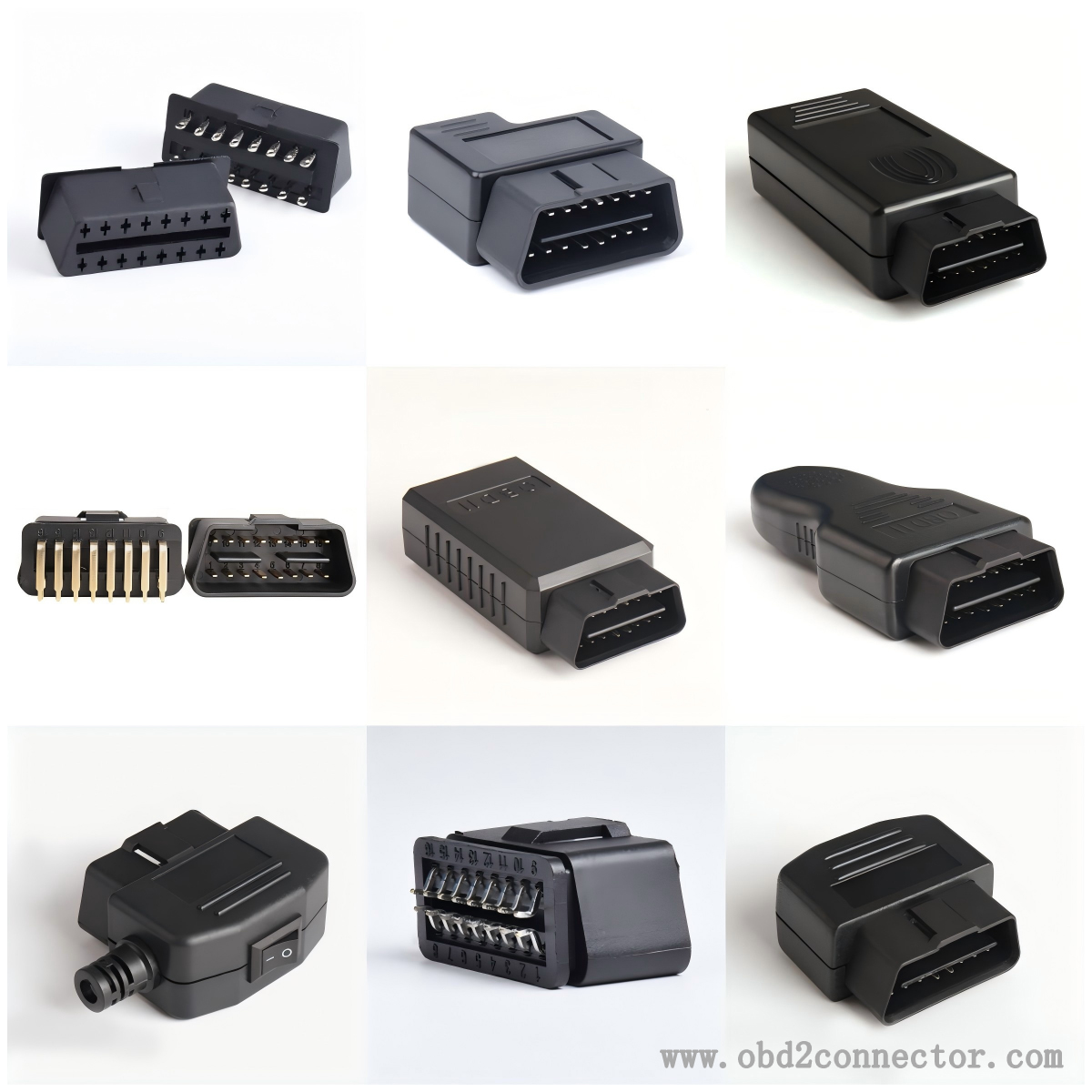How to choose right angle OBDII connector for your vehicle?
When choosing a right angle OBDII connector that is suitable for your vehicle, you need to consider the following aspects:
Vehicle compatibility:
Clearly specify the vehicle model and year: The pin definitions, electrical characteristics, and physical layout of the OBDII interface may vary for vehicles of different models and years.
Refer to the vehicle manual: The vehicle manual usually provides detailed instructions about the OBDII interface, including interface location, specifications, and applicable connector types. Based on these, you can choose the appropriate right angle OBDII connector.

Connector specifications:
Pin definition: The OBDII standard specifies a 16 pin connector, but different pins are used for different functions such as power, grounding, data transmission, etc. Ensure that the selected right angle connector pin definition matches perfectly with the vehicle's OBDII interface to ensure proper electrical connection and data transmission.
Electrical characteristics: Consider electrical parameters such as the working voltage and current carrying capacity of the connector.
Quality and durability:
Material selection: High quality right angle OBDII connectors are usually made of high-strength, high temperature resistant, and corrosion-resistant materials to ensure stable and reliable operation in various working environments of automobiles. The internal pins and contact points should be made of highly conductive metals and treated with gold or nickel plating to reduce contact resistance, prevent oxidation and corrosion.
Installation and usability convenience:
The rationality of right angle design: The right angle and bending radius of the right angle OBDII connector should be suitable for the installation position and surrounding spatial layout of the vehicle OBDII interface. Ensure that the connector does not interfere with other components after installation and is easy to connect and disconnect diagnostic equipment or other external devices.
Compatibility and Scalability: Consider whether it may be necessary to connect other types of devices or expand functionality in the future. Choosing a right angled OBDII connector with good compatibility and scalability can avoid the need to replace the connector when new devices or features need to be added.